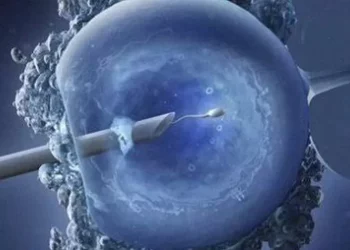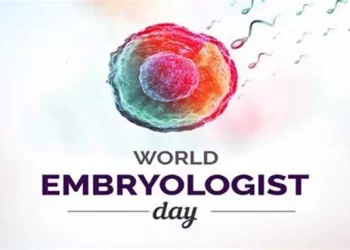Scar tissue in the uterus, often referred to as intrauterine adhesions or Asherman’s syndrome, can indeed cause infertility. This condition, while not overly common, presents significant challenges to women of reproductive age who desire to conceive. This article explores the various aspects of intrauterine adhesions, including their causes, symptoms, diagnostic methods, treatment options, and the impact on fertility.
Understanding the Uterus and Its Role in Fertility
The uterus is a vital organ in the female reproductive system. Its primary function is to host and nurture a fertilized egg until it develops into a fetus and is ready for birth. The inner lining of the uterus, known as the endometrium, plays a crucial role in this process. It thickens each month in preparation for a potential pregnancy. If fertilization does not occur, the endometrium sheds during menstruation.
What are Intrauterine Adhesions?
Intrauterine adhesions (IUA) occur when scar tissue forms inside the uterus. This scar tissue can cause the walls of the uterus to stick together. The condition can range from mild, where small portions of the uterine walls are affected, to severe, where most of the uterine cavity is obliterated by scar tissue. When severe, intrauterine adhesions can cause significant menstrual irregularities and infertility.
Causes of Intrauterine Adhesions
There are several potential causes of intrauterine adhesions, with the most common being:
Uterine Surgery: Procedures such as dilation and curettage (D&C), often performed after miscarriages or abortions, can damage the uterine lining. Repeated D&C procedures increase the risk of scar tissue formation.
Infections: Severe pelvic infections, particularly those affecting the endometrium (endometritis), can lead to scarring. Tuberculosis, although rare in many parts of the world, is a notable infectious cause.
Cesarean Section (C-Section): This surgical delivery method can sometimes result in intrauterine adhesions if the healing process does not proceed normally.
Endometrial Ablation: This procedure, intended to treat heavy menstrual bleeding, can destroy the endometrial lining, leading to scar tissue formation.
Radiation Therapy: Treatment for cancers in the pelvic area can inadvertently damage the uterus and lead to scar tissue development.
See Also: Can Diabetes Cause Infertility?
Symptoms of Intrauterine Adhesions
The symptoms of intrauterine adhesions can vary based on the severity of the condition. Some women may remain asymptomatic, particularly in mild cases. However, common symptoms include:
Menstrual Irregularities: These can range from lighter than usual periods (hypomenorrhea) to complete absence of periods (amenorrhea). Some women may experience painful periods (dysmenorrhea).
Recurrent Miscarriages: Scar tissue can prevent the proper implantation and growth of an embryo, leading to miscarriages.
Infertility: This is often the most distressing symptom, as the scar tissue can block the sperm from meeting the egg or prevent the embryo from implanting properly in the uterine lining.
Pelvic Pain: Although less common, some women may experience chronic pelvic pain due to adhesions.
Diagnosis of Intrauterine Adhesions
Diagnosing intrauterine adhesions involves a combination of medical history, physical examination, and specialized imaging techniques:
Hysteroscopy: This is the gold standard for diagnosing intrauterine adhesions. During this procedure, a thin, lighted tube is inserted into the uterus, allowing direct visualization of the uterine cavity and any adhesions present.
Hysterosalpingography (HSG): An X-ray procedure where a dye is injected into the uterus and fallopian tubes. It can reveal the outline of the uterine cavity and any blockages or irregularities.
Sonohysterography: Similar to HSG, this involves injecting saline into the uterus during an ultrasound to provide a clearer image of the uterine cavity.
Transvaginal Ultrasound: This non-invasive method can sometimes detect abnormalities in the uterine lining, although it is less definitive than hysteroscopy or HSG.
Treatment Options for Intrauterine Adhesions
Treatment for intrauterine adhesions aims to remove the scar tissue and restore normal uterine function. The choice of treatment depends on the severity of the adhesions and the symptoms presented. Common treatment options include:
Hysteroscopic Adhesiolysis: This is the primary treatment for intrauterine adhesions. Using hysteroscopy, the adhesions are cut away with special instruments. This procedure can be repeated if necessary, depending on the extent of the adhesions.
Hormonal Therapy: Post-surgical treatment often includes estrogen therapy to help regenerate the endometrial lining. Estrogen promotes healing and reduces the risk of adhesions reforming.
Intrauterine Devices (IUDs): Sometimes, an IUD is placed in the uterus after surgery to keep the uterine walls apart, preventing them from sticking together again.
Antibiotics: If an infection caused the adhesions, antibiotics are administered to treat the underlying infection.
Stem Cell Therapy: Experimental treatments using stem cells to regenerate the endometrial lining are currently being researched and show promise for future management of severe cases.
Impact of Intrauterine Adhesions on Fertility
Intrauterine adhesions can have a profound impact on a woman’s fertility. The scar tissue can obstruct the normal functioning of the uterus in several ways:
Blocking Sperm Entry: Adhesions near the cervix can prevent sperm from entering the uterus and reaching the egg.
Preventing Implantation: Scar tissue can create an inhospitable environment for an embryo, preventing it from implanting into the uterine lining.
Impaired Endometrial Function: Even if implantation occurs, a scarred endometrial lining may not be able to sustain a pregnancy, leading to early pregnancy loss.
Obstructing Fallopian Tubes: In severe cases, adhesions can extend to the fallopian tubes, blocking the passage of the egg to the uterus.
Prognosis and Fertility Outcomes
The prognosis for fertility after treatment for intrauterine adhesions depends largely on the extent of the adhesions and the success of the treatment. Women with mild to moderate adhesions often have good outcomes following hysteroscopic adhesiolysis. Studies suggest that up to 80% of women can achieve normal menstrual function after treatment.
For women with severe adhesions, the prognosis is less favorable, but advancements in surgical techniques and postoperative care are improving outcomes. Successful pregnancies are still possible, though they may require multiple interventions and close monitoring.
Prevention and Risk Reduction
Preventing intrauterine adhesions involves minimizing the risk factors associated with their development:
Careful Surgical Techniques: Medical professionals should use the least invasive techniques possible for uterine surgeries to reduce the risk of scarring.
Prompt Treatment of Infections: Early and effective treatment of pelvic infections can prevent the development of scar tissue.
Postoperative Care: Following surgical procedures, appropriate postoperative care, including the use of hormonal therapy and monitoring, can reduce the risk of adhesions forming.
Patient Education: Educating women on the potential risks associated with multiple D&C procedures and encouraging alternative treatments when appropriate can help reduce the incidence of intrauterine adhesions.
Conclusion
Scar tissue in the uterus, or intrauterine adhesions, can significantly impact a woman’s fertility. The formation of scar tissue can result from various causes, including uterine surgery, infections, and other medical treatments. Symptoms may include menstrual irregularities, recurrent miscarriages, infertility, and pelvic pain.
Diagnosis typically involves hysteroscopy, hysterosalpingography, sonohysterography, and transvaginal ultrasound. Treatment primarily consists of hysteroscopic adhesiolysis, hormonal therapy, IUD placement, and sometimes experimental approaches like stem cell therapy. The impact on fertility can be profound, but with appropriate treatment, many women can restore their reproductive potential. Prevention strategies, including careful surgical techniques and prompt treatment of infections, are crucial in reducing the risk of intrauterine adhesions.
In summary, while intrauterine adhesions present a significant challenge, advancements in medical techniques and a thorough understanding of the condition offer hope for affected women seeking to overcome infertility.
Related Links:



























